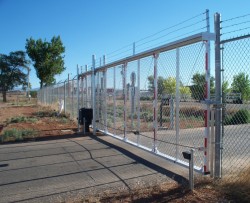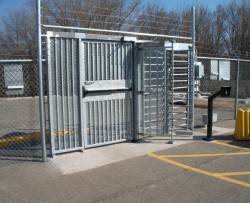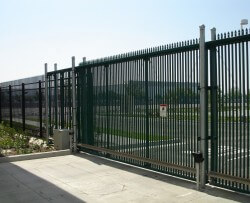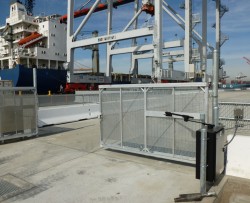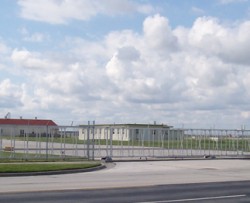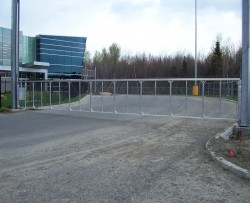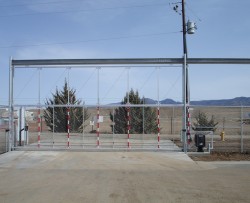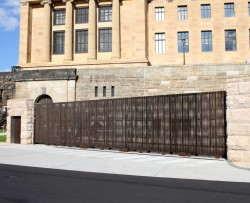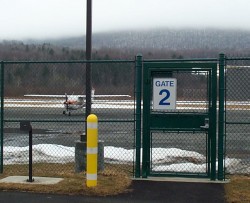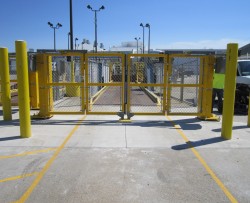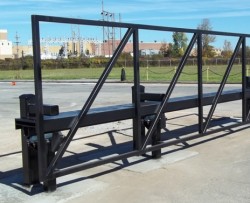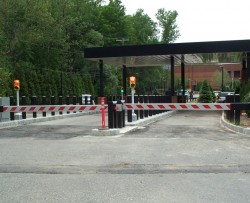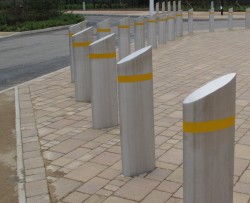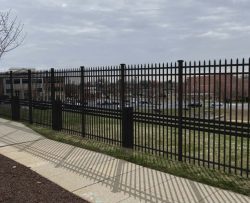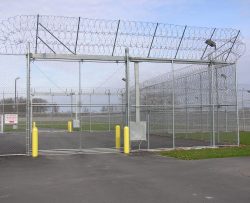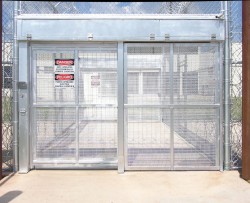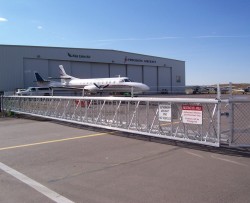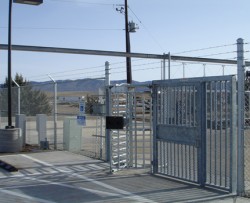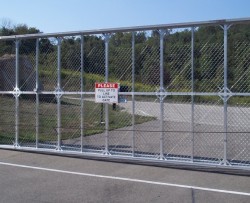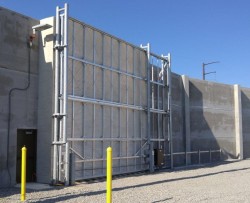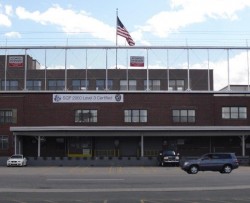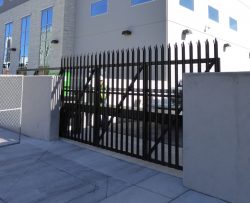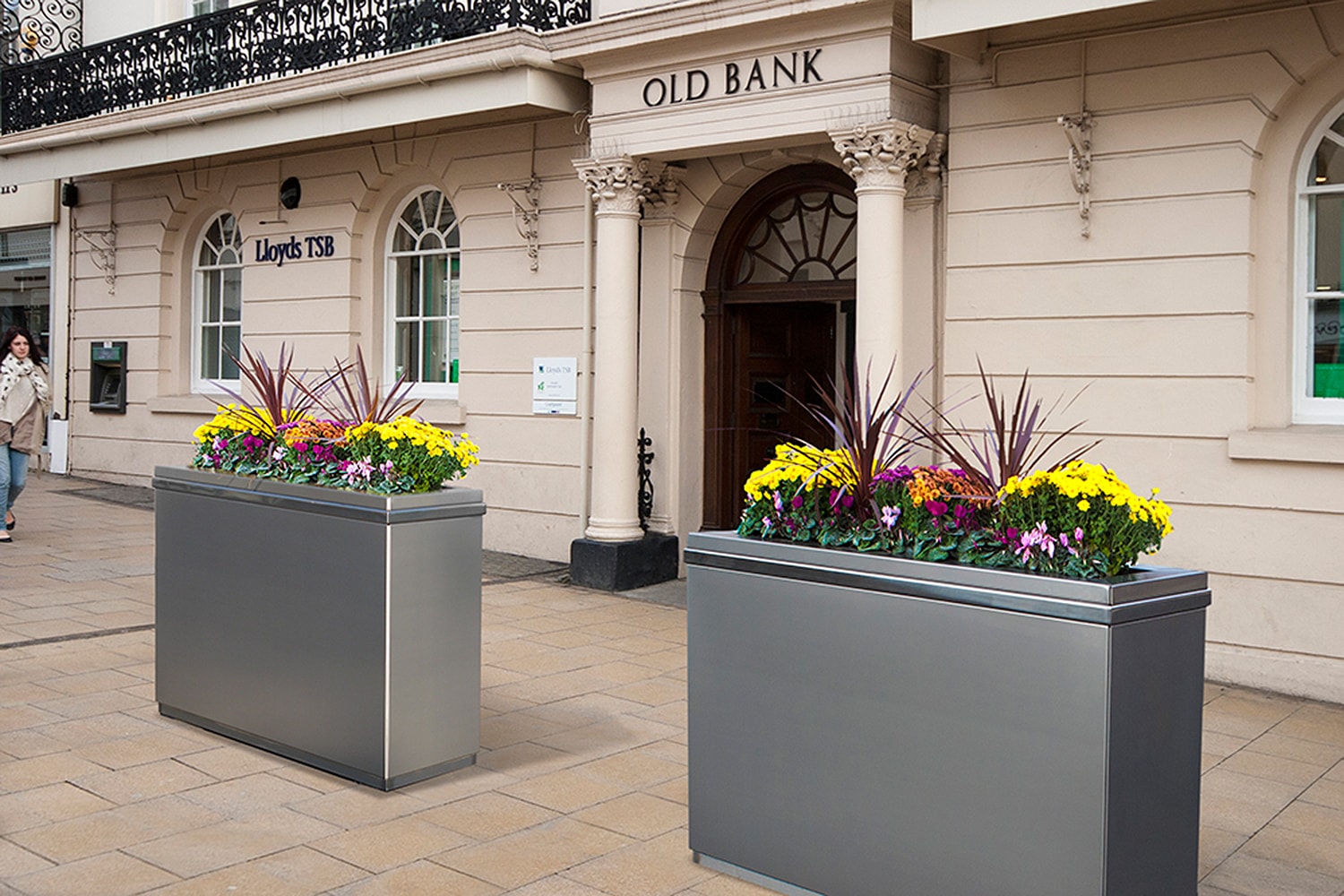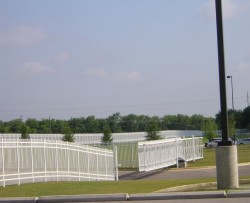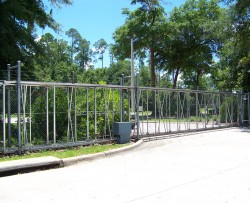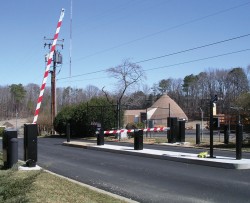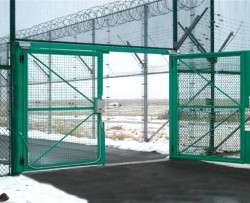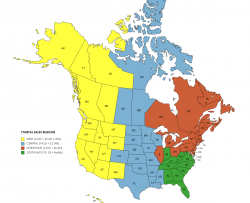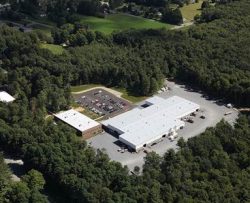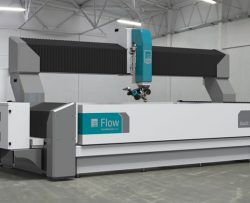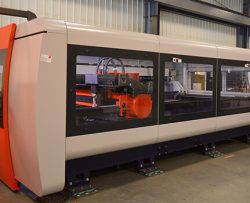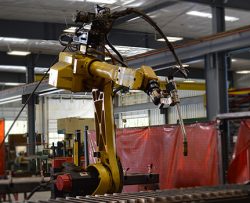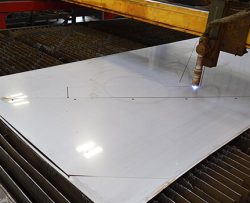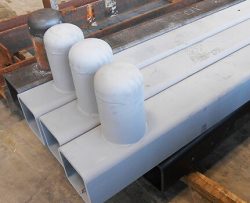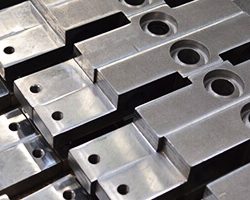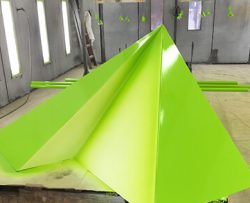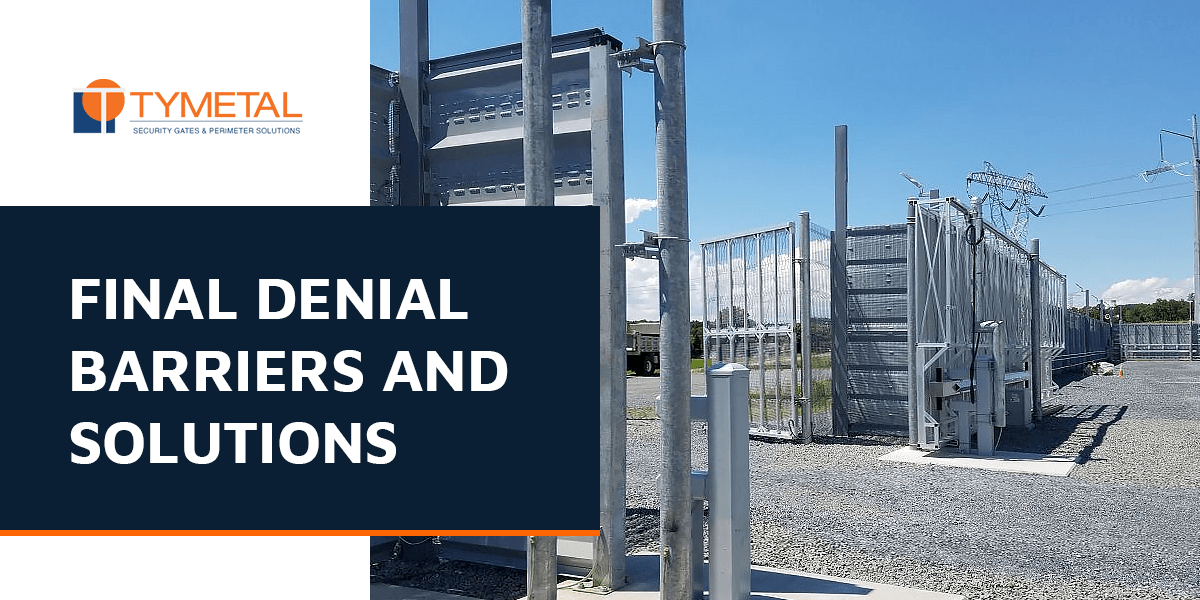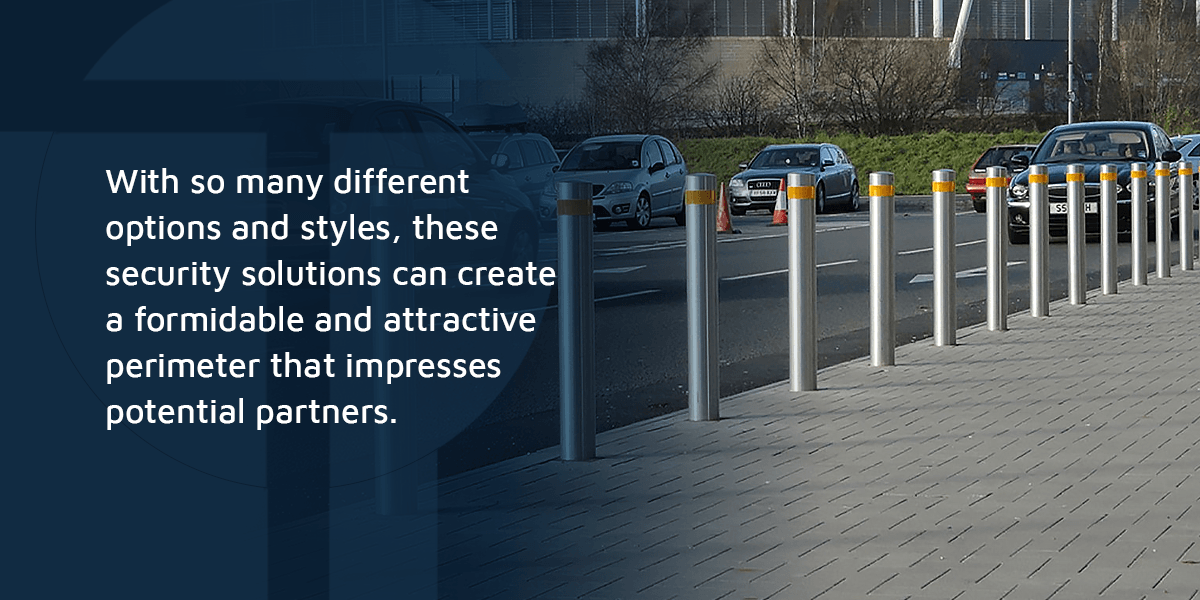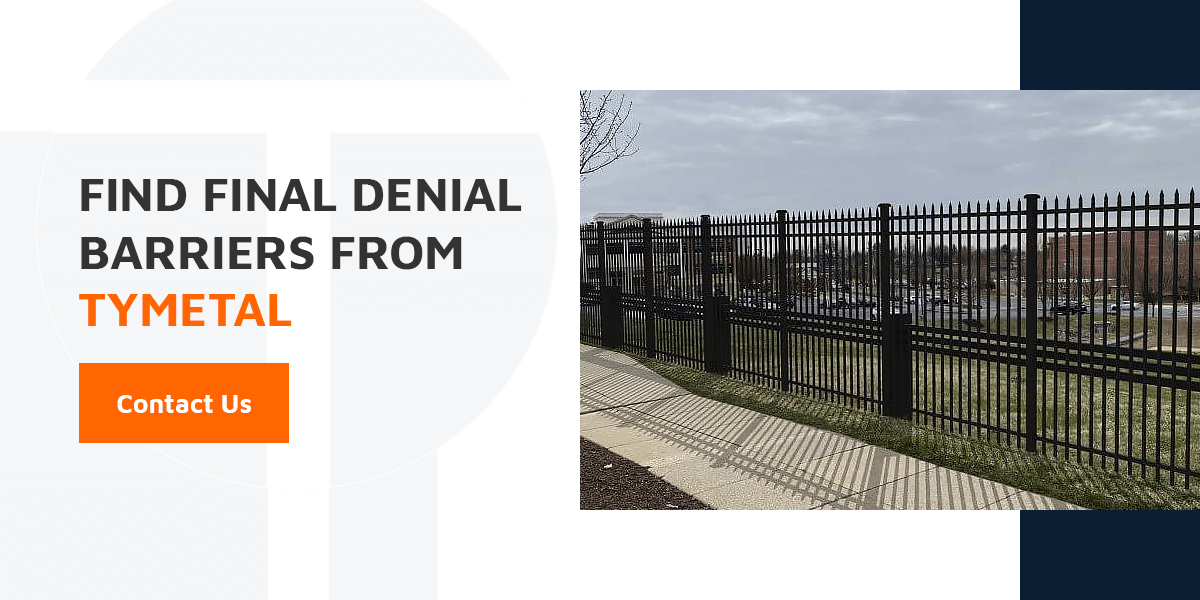Final Denial Barriers And Solutions
Whether an organization is near busy streets or even in a remote location, final denial barriers provide valuable protection against vehicle rams. Whether threats are coming from terrorists, thieves, out-of-control drivers or anyone else that could otherwise break through the perimeter, final denial barriers can bring them to a halt quickly.
Common everywhere from military bases to storefronts, final denial systems are crucial to preventing breaches from both vehicles and people.
What Are Final Denial Barriers?
Final denial barriers are physical barriers placed at the last point in a physical security plan where it’s possible to stop a breach. Final denial solutions might include metal-reinforced poles at an entrance, heavy-duty fences with gates granting access to an area, or sturdy, crash-rated beams. While preventing unauthorized pedestrian access can be a feature of these barriers, they are usually rated for vehicular crash prevention. With the proper engineering, they can keep even the largest of vehicles from penetrating the barriers.
These crash-rated barriers are an essential part of protecting a facility from both accidental and intentional ramming, such as in terrorist attacks or out-of-control vehicles. The barriers need to stop a heavy, fast-moving vehicle in its tracks so it doesn’t enter a facility or pedestrian area. Such protection measures are essential for many high-security facilities and crowded public areas where these incidents cannot be permitted for safety and security.
Final denial barriers typically have an M-rating (M30, M40 or M50) to measure their performance in a crash. The M-rating system, which comes from ASTM International standard F2656, addresses the speed and weight of an incoming vehicle and how well the specified barrier can stop it.
M-ratings are based on a 15,000-pound, medium-duty truck, and provide a measurement for how far the vehicle’s payload travels past the barrier, at a specified speed. For example, for a denial barrier receiving an M-rating of M30-P2, it must allow for a maximum vehicle penetration between 3.31 feet and 23 feet when a medium-duty truck travels at 30 miles per hour.
Crash barriers can come with various M-ratings and are tested to perform at various crash testing conditions. Bollards, gates and other barriers may allow for varying penetration distances depending on the vehicle’s speed, size and angle. Always review the certifications and statements on a denial barrier to ensure that its ratings suit your application. You can also chat with a TYMETAL pro to learn more about finding the right level of crash protection for your situation.
Final Denial Barrier Solutions
Final denial barriers can come in many forms, allowing users to implement anti-ramming systems that fit their facility’s needs for access and appearance. Some types of final denial systems include the following solutions.
- Gates: Emergency crash gates are available in many styles, from cantilever slide, swing, rising beam, vertical lift, roller with track and overhead designs. They can be combined with access control and operator systems and pedestrian portals to offer permitted access for many perimeter configurations. The different designs allow for gates that fit into tight and oddly-shaped shaped spaces and allow large, authorized vehicles to pass through them without sacrificing security. The nature of your business and property will play a large role in which gate type is best, and all can offer robust crash protection.
- Beams: Crash beams can be raised and lowered for vehicle access while providing impact resistance when needed. They’re available in manual, hydraulic and electro-mechanical styles. Beams offer solid vehicle protection in low-traffic areas but won’t keep pedestrians out of the property.
- Bollards: Vertical crash bollards are commonly placed outside building entrances and large pedestrian spaces. They can vary in stopping power suitable for cars to trucks and come in a range of aesthetic finishes and appearances. Bollards come in fixed and removable designs. Some can even be made into planters and given other attractive finishes that fit with a building’s design. Bollards are intended to deter vehicles while allowing pedestrians to freely pass through.
- Fences: Like gates, high-security crash fences go through rigorous crash testing and are available in various finishes. They can also offer protection from many types of unauthorized access and keep your perimeter secure.
TYMETAL puts durability, reliability, quality and ease of use into each of our final denial systems. We’re an industry leader in security barriers and have many products listed in the Department of Defense’s Anti-Ram Vehicle Barrier List.
Final Denial Applications
Final denial barriers are necessary for high-security facilities and high foot-traffic areas, such as:
- Airports: Barriers can keep unauthorized vehicles out of private areas like terminals, hangars and runways.
- Military bases: These high-security facilities require exceptional crash barriers and other forms of perimeter protection to keep trespassers and attackers out while allowing military traffic through.
- Border crossings: National borders often feature final denial barriers to prevent unlawful crossing.
- Public walkways: In areas with high pedestrian traffic, you’ll often find bollards and gates to separate vehicle traffic and protect the public. Parking lots, sidewalks, parks and large courtyards are a few places you may see them.
- Transportation terminals: High-traffic public transit stations benefit from crash prevention systems to keep attackers out of crowded transportation hubs.
- Factories, plants and distribution facilities: The appropriate final denial systems can keep thieves and corporate spies out of warehouses and manufacturing facilities.
- Seaports: Final denial barriers can prevent unauthorized access and materials from crossing at the country’s ports of entry.
In all these instances, final denial barriers provide a range of capabilities, from preventing unauthorized entry and terrorist attacks to keeping pedestrians safe. Federal or industry regulations may require crash protection for many of these facilities. These anti-ram and crash-prevention systems also have some less-obvious benefits.
For example, vehicle denial barriers can help an organization improve its reputation and credibility. Robust security solutions show clients and citizens that the facility is well protected. Private businesses can give clients more peace of mind that their information or products are safe. With so many different options and styles, these security solutions can create a formidable and attractive perimeter that attracts new clients and opportunities.
Find Final Denial Barriers From TYMETAL
Here at TYMETAL, final denial barriers are one of our specialties. We create some of the highest-quality gates and security systems on the market, all sold with exceptional customer service. We’ll work with you to determine which solution is best for your project from our vast catalog of products, and we’ll put it through rigorous design testing.
With decades of experience, TYMETAL and its team of experienced professionals are the go-to providers for final denial systems. Regardless of the complexity of your facility or security requirements, we’ll help you find the right barrier. To start talking about vehicle penetration prevention, reach out to a TYMETAL team member today. If you need to secure your perimeter, you need the best. You need TYMETAL!
